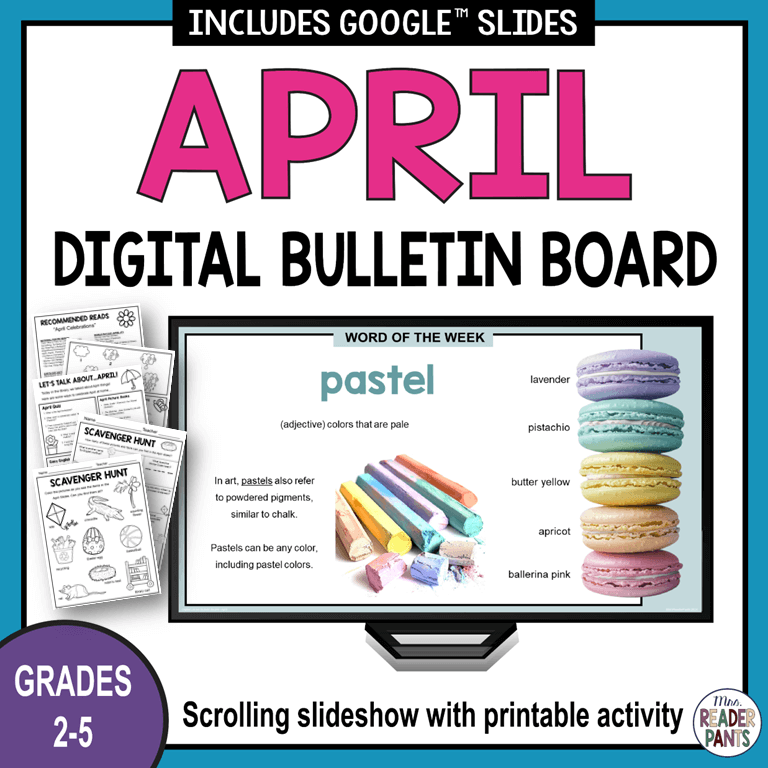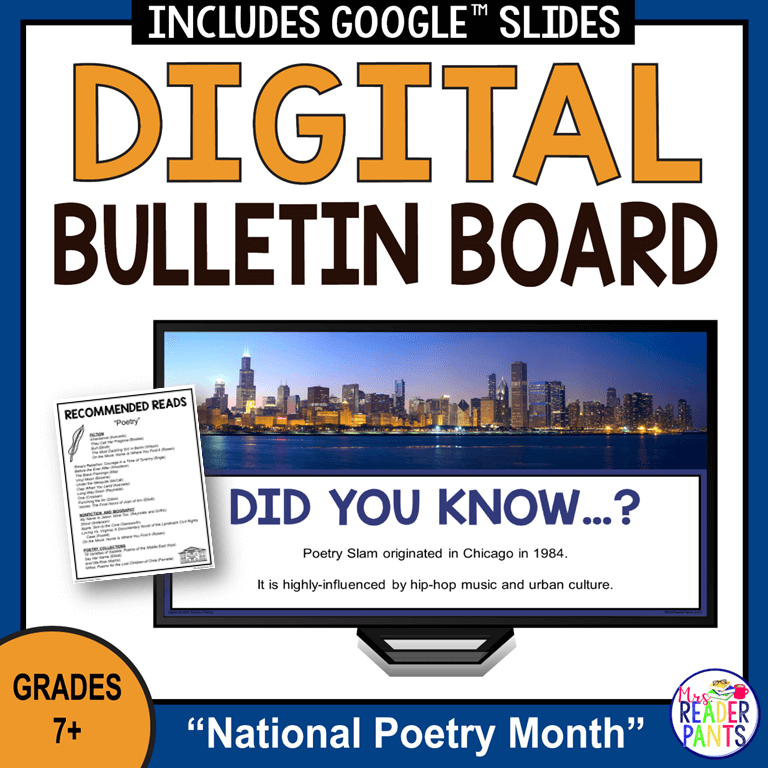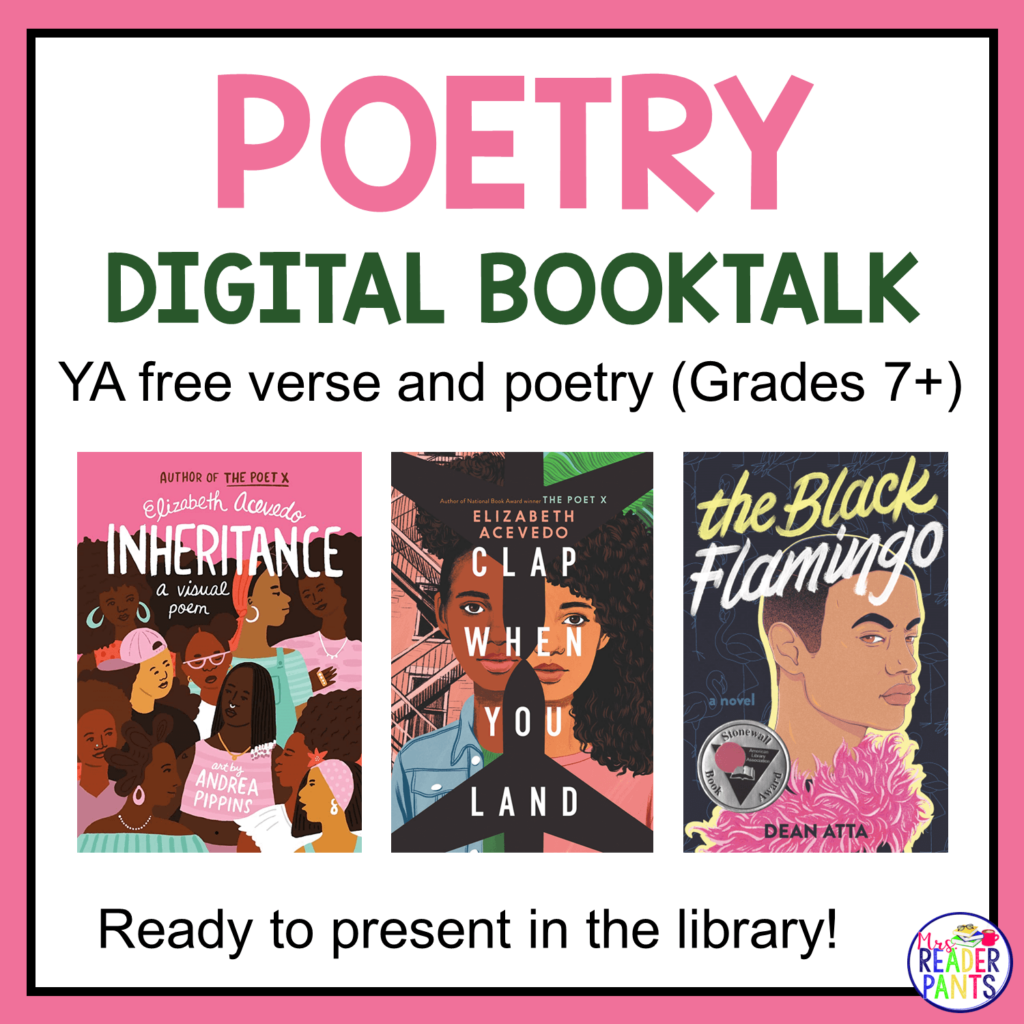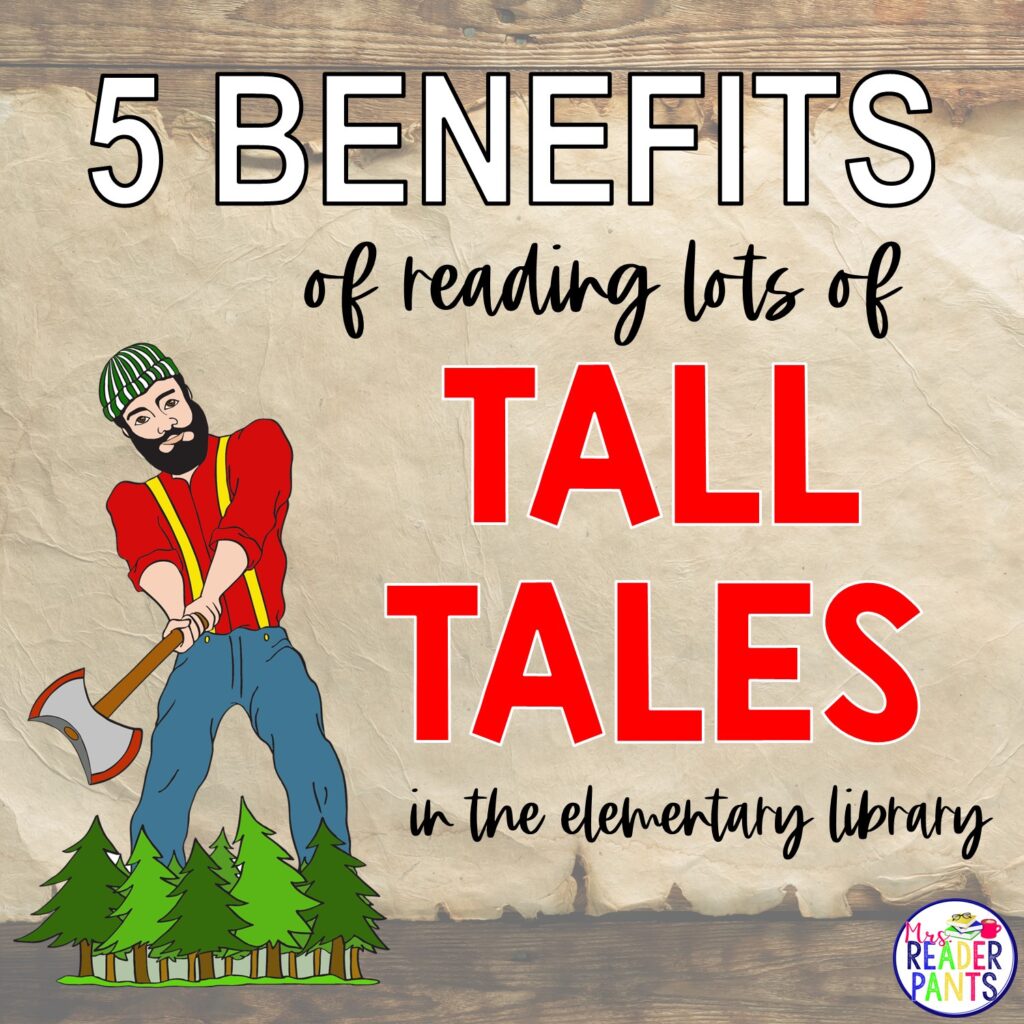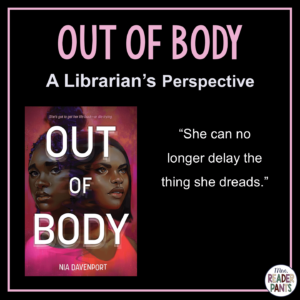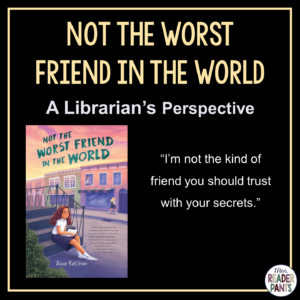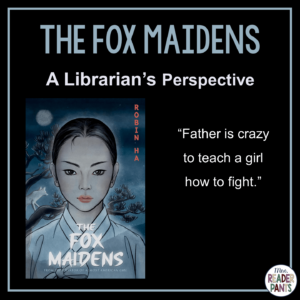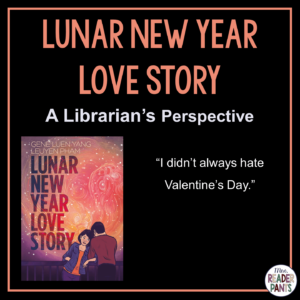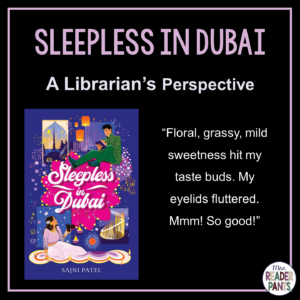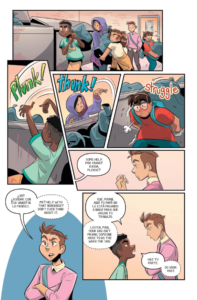It’s rare when I don’t love a graphic novel, but I didn’t really like Invisible by Christina Diaz Gonzalez. I had trouble following the story early-on, and while things became clearer as I read, I just couldn’t get into the story by that point. The principal and cafeteria lady are unnecessarily abusive to the students, and I hate that it’s normalized in the story.
 AUTHOR: Christina Diaz Gonzalez
AUTHOR: Christina Diaz Gonzalez
ILLUSTRATOR: Gabriela Epstein
SERIES: none
PUBLISHER: Graphix; Bilingual edition
PUBLICATION DATE: August 2, 2022
PAGES: 208
GENRE: graphic novel, realistic fiction
SETTING: middle school
GIVE IT TO: MS
AWARDS AND KUDOS
- Booklist starred
- SLJ starred
- an SLJ Best Book of the Year (2022) – Graphic Novels
- Graphic Novels and Comics Round Table (GNCRT) – Best Graphic Novels for Children – Top 10 (2022)
SUMMARY
Can five overlooked kids make one big difference?
There’s George: the brain
Sara: the loner
Dayara: the tough kid
Nico: the rich kid
And Miguel: the athlete
And they’re stuck together when they’re forced to complete their school’s community service hours. Although they’re sure they have nothing in common with one another, some people see them as all the same . . . just five Spanish-speaking kids.
Then they meet someone who truly needs their help, and they must decide whether they are each willing to expose their own secrets to help . . . or if remaining invisible is the only way to survive middle school.
THE SHORT VERSION
This book has garnered lots of attention and awards, but I personally had trouble following the story.
WHAT I LIKED
It’s bilingual. Most text appears together in English and Spanish (see sample page below). I currently live in Mexico, and reading in Spanish really helps me pick up words and phrases that I don’t get in my online Spanish courses. I love that the Spanish and English are side-by-side here.
WHAT I DIDN’T LIKE
Okay, here we go. I hate it when I dislike a book that so many love. What am I not seeing?
This is a Breakfast Club type of story. We have five Latine middle schoolers who are are assigned cafeteria clean-up duty together. For one student, he gets cafeteria duty for “volunteer” work. I’m guessing the other four got it for the same reason, but without going back and rereading the book, I’m not totally sure. It wasn’t clear to me why the others got cafeteria duty. I kept thinking they were in trouble because of the way the awful cafeteria lady was treating them.
The story centers on why they have all been called into the principal’s office. It seems some incident occurred during cafeteria duty that the students don’t want to talk about.
For most of the book, it feels like these students are in trouble. The principal says they “conspired to do something.” He tells another teacher that he doesn’t want to tell them why they have been called to his office because “it’s all about timing, seeing how they’ll react.” Seriously? He clearly wants to intimidate them so they think they are in trouble. Sicko.
The twist comes out at the end. The students are not in trouble; they are getting recognized for helping a local homeless woman and her child eat and find a job.
What principal has time to bring students to the office for questioning, one by one, when they aren’t in trouble at all? What kind of principal intentionally makes the students think they are in trouble? Apparently, the same principal that compels student labor so he can collect some award for volunteer work.
It reminds me of times when I’ve been called to the principal’s office as a teacher “at the end of the day” and I had to worry about it all day. Why is any of that necessary? Just TELL US what it’s about!
As a teacher, I can tell you this power dynamic happens all the time in schools. The person with the power (principal) intentionally intimidates people without power (students and teachers). It’s not okay, and I hate that it’s portrayed as cute in this book. Students should not be afraid of principals, especially when they have done nothing wrong.
And why does the principal boast that the volunteer program at the school is 100% participation, when students are in fact compelled to “volunteer”?
Why does no one think any of the students speak English, when George clearly tells them in perfect English that he does?
And what was with that monstrous cafeteria lady? She was just that hateful for no reason? Good lord. Another unhealthy school power dynamic, normalized.
The story is told in flashback and flashforward scenes. This caused me to get lost easily, especially in the first half of the book.
The students weren’t fleshed out very well. I know almost nothing about any of them. One likes to cook and lives with her dad. One is wealthy, but his parents are still in Venezuela. One is a brainy kid who preferred to speak English instead of Spanish and seems to live in a hotel outside the school district zones. One is kind of a bully girl who isn’t really a bully? And one plays baseball but also loves art.
That’s about all I know about them.
I wonder if this might have been better as a middle grade novel with alternating viewpoints. It seems the graphic novel format doesn’t allow much character development in this one.
DIVERSITY
All five student characters are Latine. Principal cues as Black. A Spanish teacher/translator is white. The mean old cafeteria lady is white.
ARTWORK/ILLUSTRATIONS
Illustrations are full-color, with a varied color palatte. Student dialogue includes English and Spanish phrases throughout.
THEMES
- middle school, getting into trouble at school, cafeteria duty, misfits, homelessness, helping others, immigration
LIBRARIANS WILL WANT TO KNOW
- Would adults like this book? Adults that like reading middle grade graphic novels might like it. Generally, I do not recommend Invisible for adults.
- Would I buy this for my high school library? NO – the protagonists are middle school students.
- Would I buy this for my middle school library? YES – the bilingual text alone makes it a worthy middle school purchase. Plus, it’s won several awards and recognitions. Surely, it’s just me.
- Would I buy this for my elementary school library? MAYBE – Middle school is a better fit, but I see no reason why elementary libraries would not buy this book.
MATURE CONTENT
- Language: none that I remember
- Sexuality: none
- Violence: none
- Drugs/Alcohol: none
- Other: none

